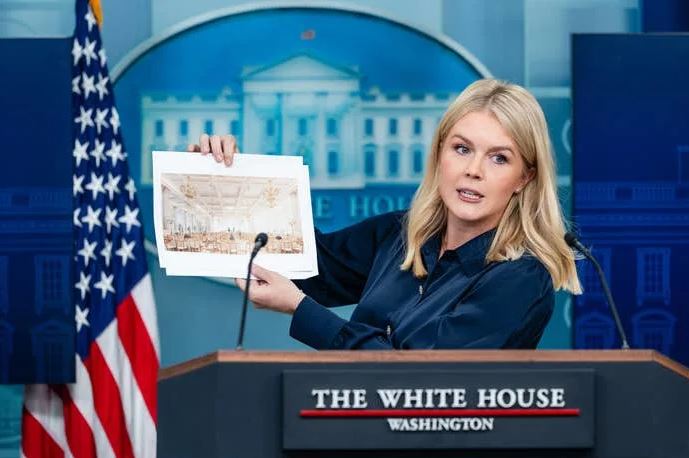A Monumental Expansion to the Historic White House Grounds
In an unprecedented move that merges presidential legacy with architectural ambition, the White House has confirmed plans to construct a sprawling 90,000-square-foot State Ballroom, a long-held vision of President Donald J. Trump. The $200 million project, entirely funded by private donors and Trump himself, marks the most significant structural addition to the White House in over a century. Designed to surpass the current capacity limitations of the East Room, this new ballroom is set to redefine the ceremonial and diplomatic landscape of the United States’ executive mansion.
Privately Funded Presidential Vision
Unlike most federal construction projects, the ballroom will not rely on taxpayer dollars. Instead, it will be financed by a coalition of private contributors, including Trump’s personal funds and a network of undisclosed high-level donors. This approach reflects Trump’s broader strategy of self-financing hallmark projects to create what insiders call a “living legacy” within the very heart of American power.
White House Press Secretary Karoline Leavitt emphasized during a July 31st briefing that “the new State Ballroom will serve both the current and future administrations”, ensuring continuity and modernization without compromising the White House’s historical essence.
Replacing the East Wing: A Shift in Functional Design
The ballroom’s construction will lead to a substantial reconfiguration of the White House East Wing, traditionally home to the First Lady’s offices and key administrative spaces. Rather than demolish the entire structure, the plan incorporates a hybrid solution: select office spaces will be relocated, while others will undergo modernization to accommodate the structural transformation.
Construction is expected to begin in September 2025, with a goal to complete the project before the conclusion of Trump’s second term. Engineers and architects have emphasized that the ballroom will be separate yet stylistically cohesive, maintaining architectural harmony with the rest of the executive complex.
Architectural Mastery and Oversight
The project will be helmed by McCrery Architects, renowned for their classical aesthetic and federal design compliance. AECOM, a global leader in engineering services, will provide structural consultation and environmental compliance, while Clark Construction, one of America’s most trusted builders, will manage the execution.
The ballroom will be modeled in neoclassical architecture, echoing the iconic facades of the White House and emphasizing symmetry, white marble accents, towering columns, and gilded interior finishes. Its sheer scale, rivaling grand European palaces, will make it the largest entertainment space ever integrated into the White House.
A Grand Ballroom for Diplomacy and Statecraft
Currently, the East Room accommodates approximately 200 guests, significantly restricting attendance for major events such as state dinners, national awards, and international summits. In contrast, the new State Ballroom will seat up to 650 guests, enabling more inclusive, expansive ceremonial functions.
Trump has long been vocal about the need for such a venue. At multiple public events, he has cited foreign palaces and presidential residences abroad as having superior facilities. “We need a ballroom that reflects the power and elegance of America,” he said during a private fundraiser earlier this year.
The ballroom will include:
- State-of-the-art acoustics for presidential addresses and musical performances
- Retractable walls to adjust the space for varied event sizes
- Advanced lighting systems compatible with international media standards
- Secure zones for VIP attendees and dignitaries
- Luxury green rooms and backstage facilities
Preserving Heritage While Embracing Expansion
Despite the grandeur of the plan, the White House Historical Association has been engaged in every phase of the project to ensure historical preservation standards are met. The National Park Service and Commission of Fine Arts have reviewed preliminary designs, giving conditional approval based on environmental and aesthetic impact assessments.
According to sources familiar with the design process, no existing National Historic Landmarks will be removed or altered, and the project has been crafted with “historical reversibility” in mind—meaning it can be deconstructed without permanent damage to the original estate if future administrations choose to reverse the expansion.
Political and Cultural Ramifications
While supporters of the project praise it as a transformative addition to American statecraft, critics question its timing and potential symbolic impact. Some view it as a monument to Trump’s persona, while others argue that the functionality and prestige it brings to the White House outweigh any personal branding concerns.
In Washington D.C., reactions have been mixed. Congressional Republicans have largely voiced support, emphasizing the zero burden on federal funds, while some Democrats have raised concerns about donor transparency and historical disruption.
Nonetheless, planning continues at full speed, with permits and engineering drafts already filed with the D.C. Department of Buildings and the Historic Preservation Office.
A Legacy Etched in Stone and Steel
With this addition, Trump becomes the first president in the modern era to significantly expand the White House’s usable ceremonial space. While other presidents have made architectural changes—such as the Truman Balcony or the Clinton kitchen renovations—none have executed a project of this scale, opulence, and symbolic weight.
The ballroom is being hailed by some as “The Trump Ballroom”, though no official naming rights have been declared. Insiders hint that Trump has rejected attempts to name it after himself, wanting it instead to be seen as a gift to the presidency rather than a self-monument.
Conclusion: A New Chapter for America’s Most Iconic Residence
As construction looms and blueprints evolve into reality, the new White House ballroom stands as a testament to vision, grandeur, and legacy-building. Whether embraced as a diplomatic asset or critiqued as architectural overreach, one fact remains clear: this project will reshape the ceremonial heart of the presidency for generations to come.
With its ambitious scope, private funding model, and historic footprint, the $200 million ballroom is not just an expansion—it’s a bold architectural statement on American power, tradition, and executive prestige.
Keywords: White House ballroom, Trump White House expansion, State Ballroom construction, Trump legacy project, $200 million White House ballroom, Trump privately funded project, White House architectural renovation, East Wing transformation, McCrery Architects, Clark Construction ballroom

